Humidity Control for Medical Spaces
The importance of controlling temperature and humidity in surgical areas has been well documented by various organizations such as ASHRAE, the American Society for Health Care Engineering (ASHE) and the Association for the Advancement of Medical Instrumentation.
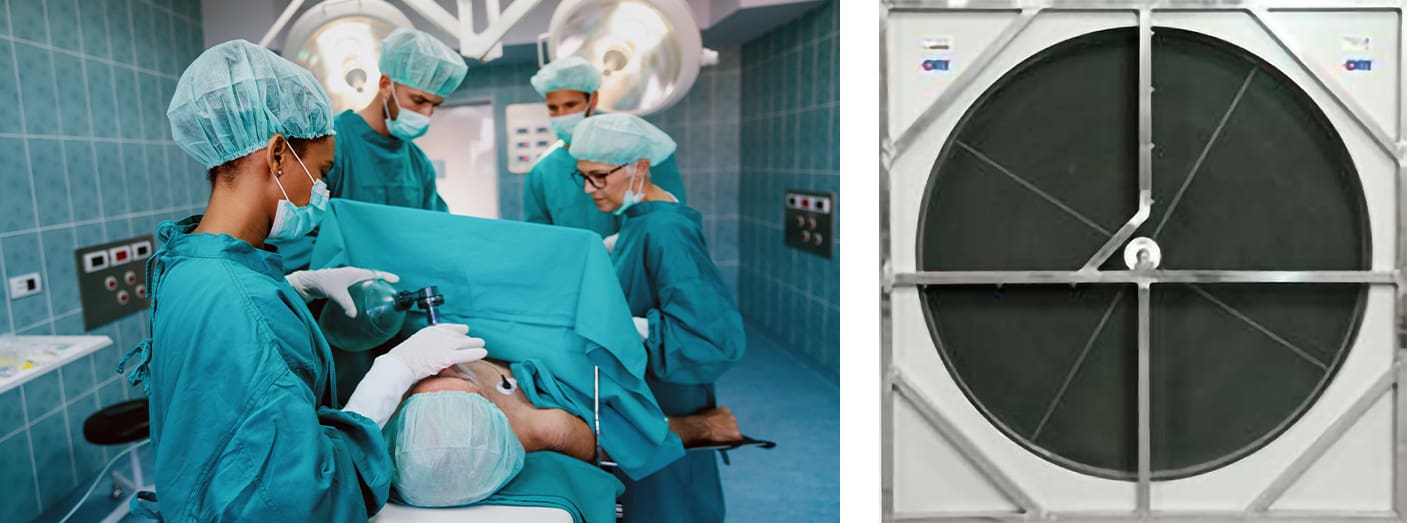
Desiccant dehumidification systems allow critical procedures to continue-on schedule and without interruptions.
ASHRAE/ASHE Standard 170- 2017, Ventilation of Health Care Facilities, defines the maximum relative humidity levels for an operating room to be 60%. However, with warmer and more humid weather patterns, HVAC systems are challenged to provide the cooler and drier space conditions surgeons and medical staff demand for their critical medical spaces.
Traditionally, operating rooms were designed with space temperatures between 20°C to 23°C at 60% maximum relative humidity. Due to longer operating procedures while wearing heavier multiple-layer gowning, surgeons prefer their surgical areas be maintained at lower temperatures. Consequently, lower humidity levels can be difficult to achieve with standard air-conditioning units using chilled water and direct expansion type systems.
Desiccant dehumidification preconditions the outdoor air prior to entering the air handling unit. By addressing the outdoor air moisture load, the current units serving the medical spaces can achieve lower room temperatures without sacrificing humidity control.
Direct Benefits

- Precise indoor space control with independent temperature and humidity regulation.
- Improved indoor air quality and comfort.
- Effortlessly achieve room humidity levels below 50% RH even with colder room temperatures.
- A lower supply air relative humidity eliminates the potential growth of mold, fungal spores and microbes in ductwork.
Additional Benefits

- Higher moisture removal rates with reduced energy costs.
- Allows the central chiller to operate at higher temperatures thereby improving refrigeration capacity and efficiency.
Dehumidification Process
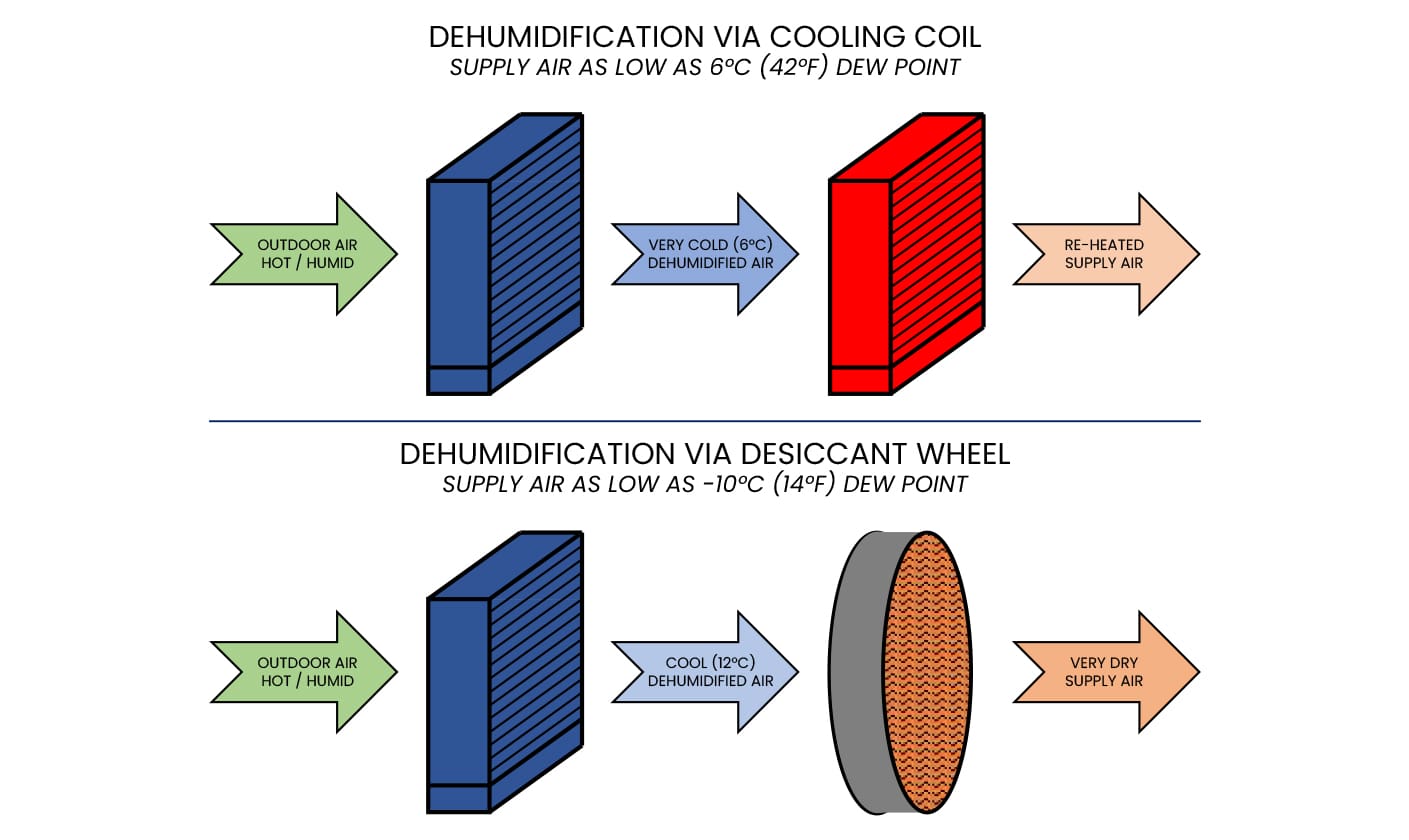
Air dehumidification can be achieved by two methods:
- Lowering the air temperature below its dewpoint, the cooling coil removes moisture through condensation.
- Adsorption by desiccant material which has a natural affinity for attracting moisture.
As the desiccant removes the moisture from the air it also releases heat back into the airstream. The drier, warmer air can then be cooled to the desired comfort level.
Simple Retrofit Strategy
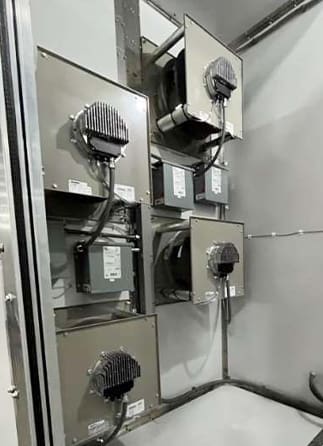
ECM FAN ARRAY FOR
ADDED REDUNDANCY
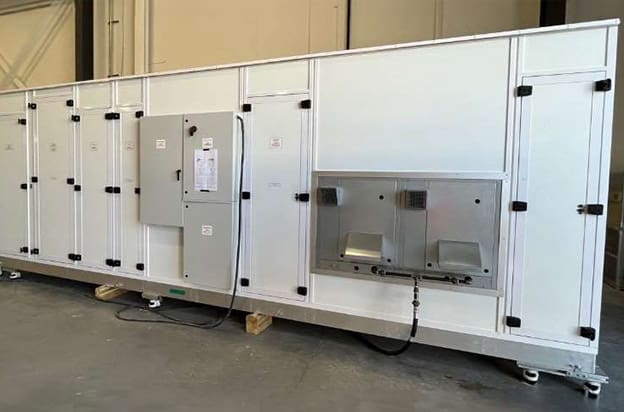
STANDARD HI-TEMP or HEAT PUMP DESICCANT UNITS
NOMINAL SIZES FROM 2,500 to 20,000 CFM
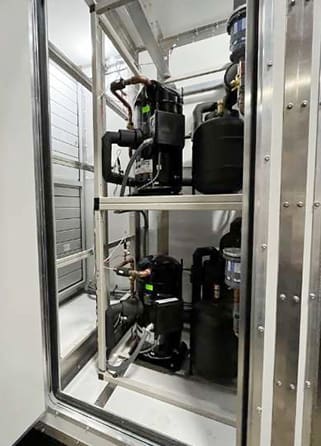
OPTIONAL INTEGRATED
COOLING
Desiccant dehumidifiers can easily integrate into existing building HVAC and control systems. The units can be installed indoors or outdoors with optional post-cooling or post-heating accessories.
All dehumidification projects delivered from EI Solutions are developed with decades of experience in critical spaces requiring low humidity control. Every aspect and component that influences space humidity is reviewed to ensure the overall success of your project.

